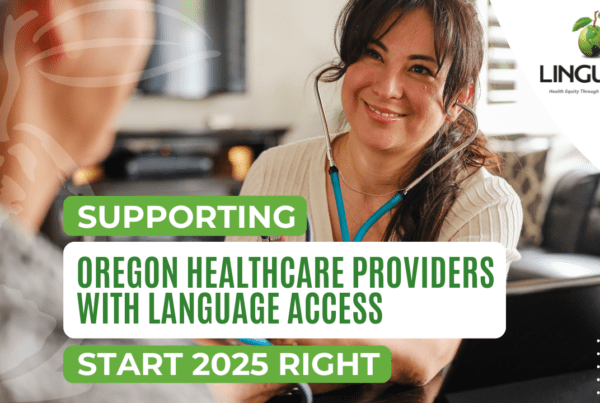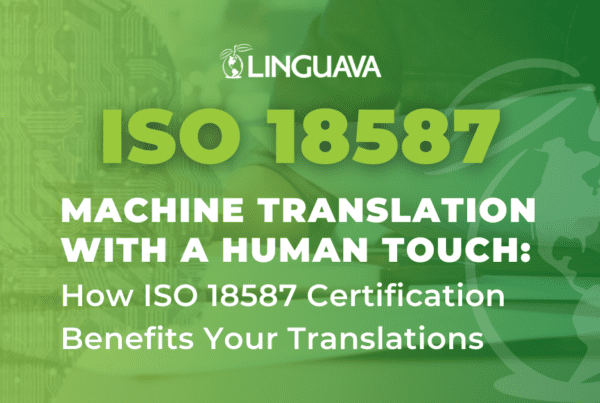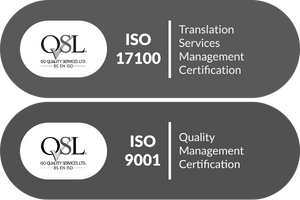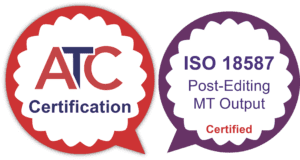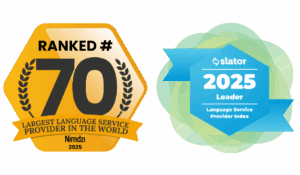At Linguava, we’ve seen firsthand how clear and compassionate communication transforms patient care. For non-English speaking patients, translating medical documents isn’t just about converting words—it’s about building trust, providing accurate care, and preventing life-threatening errors. During our recent webinar we discussed the challenges and best practices in medical translation, and how it can impact patient trust and care outcomes. Here’s a recap of the most important takeaways and actionable steps you can start using today.
Challenges in Medical Document Translation: Why Quality Matters
Translating medical documents presents unique challenges that go beyond basic language conversion. It requires in-depth medical knowledge, sensitivity to patient needs, and attention to detail.
Patry Muñoz Andrés, our Director of Translation, shared an example about the potential dangers of mistranslation using a free tool like Google Translate:
“We caught a mistake in which it was actually a mistranslation on the dosage of insulin for the patient. So in this case, it would have caused an overdose of that patient. It could have been lethal.”
This underscores why using qualified medical translators is non-negotiable in healthcare. Translation errors can have serious health consequences, and the stakes are simply too high to cut corners.
Building Trust Through Accurate Translation
Accurate translation fosters patient trust. When patients feel understood and confident in their healthcare providers, they’re more likely to engage in their treatment and follow medical instructions.
As Brett Edwards explained in the webinar:
“We’ve seen real-world examples where translating key documents led to increased appointment attendance, higher benefits utilization, and more involvement from the community.”
When healthcare organizations provide translated materials that patients can understand, it opens the door to stronger relationships and more effective care.

Best Translation Practices for Healthcare Providers
One of the key topics in the webinar was how healthcare providers can improve their translation processes. Here are some of the best practices we discussed:
-
- Assess Your Patient Demographics: Identify the languages spoken by your patients and prioritize those for translation.
- Translate Key Documents: Start with high-priority documents like consent forms, discharge instructions, and HIPAA notices.
- Partner with Certified Professionals: Work with ISO-certified translation providers to ensure that translations meet the highest standards.
- Educate Your Staff: Train your team on how to access translated materials and when to request interpreters.
By following these practices, healthcare providers can avoid common pitfalls and ensure their patients have access to the information they need.
Handling Cultural Nuances in Medical Translation
Translation isn’t just about changing words from one language to another—it’s about conveying meaning in a way that respects the patient’s culture and background. Different languages have different structures, and even common phrases can vary widely in their impact across cultures.
In the webinar, we shared several examples of how cultural nuances affect translation. Patry offered a lighthearted anecdote:
“In Spanish, we have a phrase, ‘una piña,’ which means we’re tightly bound together like the skin of a pineapple. But when I tried to use it in another context, it didn’t translate, and everyone was confused. That’s why cultural understanding is so important in translation.”
This highlights the need for translators who not only speak the language but also understand the cultural context of the target audience.
Maintaining Confidentiality and Compliance
Healthcare translation is about more than just accuracy—it’s about protecting patient information and ensuring compliance with regulations (more to come around recent Section 1557 updates). At Linguava, we’re proud to be ISO-certified, which means we follow strict protocols to keep patient information secure throughout the translation process.
Future Trends: The Role of AI and Machine Translation
While AI and machine translation can help speed up certain processes, they are not a replacement for human expertise, especially in the medical field.
As Brett Edwards noted:
“AI is fast and cost-effective, but it often lacks nuance and context, which are essential in medical translation. That’s why we always recommend human review for quality.”
At Linguava, we embrace the benefits of technology while always ensuring that a qualified human translator reviews machine-generated translations, ensuring compliance with ISO 18587.
Take Action: Download Our Top Documents for Translation Checklist
If you’re ready to take your language access strategy to the next level, we’ve got you covered. We’ve created a free checklist of the top documents every healthcare facility should translate. These are the essentials that will make the biggest difference in patient trust and care.
Frequently Asked Questions (FAQ) – Translating Medical Documents
-
- What are the most critical documents to translate in a healthcare facility?
Start with consent forms, discharge instructions, HIPAA privacy notices, and patient rights documents. - How do I ensure my translations are accurate?
Partner with a trusted, ISO-certified provider. At Linguava, we follow rigorous processes to ensure that every translation meets the highest quality standards. - What are the risks of using free translation tools like Google Translate?
While free tools can be helpful in a pinch, they aren’t reliable for medical contexts. One small mistranslation can have serious consequences. Always use qualified, human translators for critical documents.
- What are the most critical documents to translate in a healthcare facility?
Build Your Language Access Plan
Don’t wait for a crisis. If your healthcare facility doesn’t have a Language Access Plan, now is the time to create one. It ensures that you’re prepared to provide care for all patients, regardless of the language they speak. Having a solid plan in place also protects your facility from legal risks and helps you meet compliance with Section 1557.
At Linguava, we can help you create and implement your Language Access Plan. Reach out to us, and let’s work together to bridge the communication gap.
Ready to Translate Your Documents? Let Us Guide You!
Need help? We’re here to guide you through the process. From compliance to training, we’ve got the expertise to make sure you’re ready. At Linguava, we know that translation is about more than just words. It’s about ensuring that every patient feels understood and cared for. By working with an ISO-certified translation partner and putting a solid Language Access Plan in place, you can build trust, improve care quality, and ensure compliance with regulatory standards. Reach out to us if you’re ready to take the next step. We’re here to help you provide the best care possible, no matter what language your patients speak.
At Linguava, we are here to support you as your partner in language access. We are also ISO 9001, 18587, and 17100 certified, ensuring quality translations. As a leading provider of language services for the healthcare industry, we offer a wide range of services to help medical practices incorporate language access successfully. These include Translation and Localization , Scheduled Video Interpretation, Video Remote Interpretation, Over the Phone Interpretation, and American Sign Language Interpretation.
If you have a file ready to translate, get your file analysis and free quote here.


